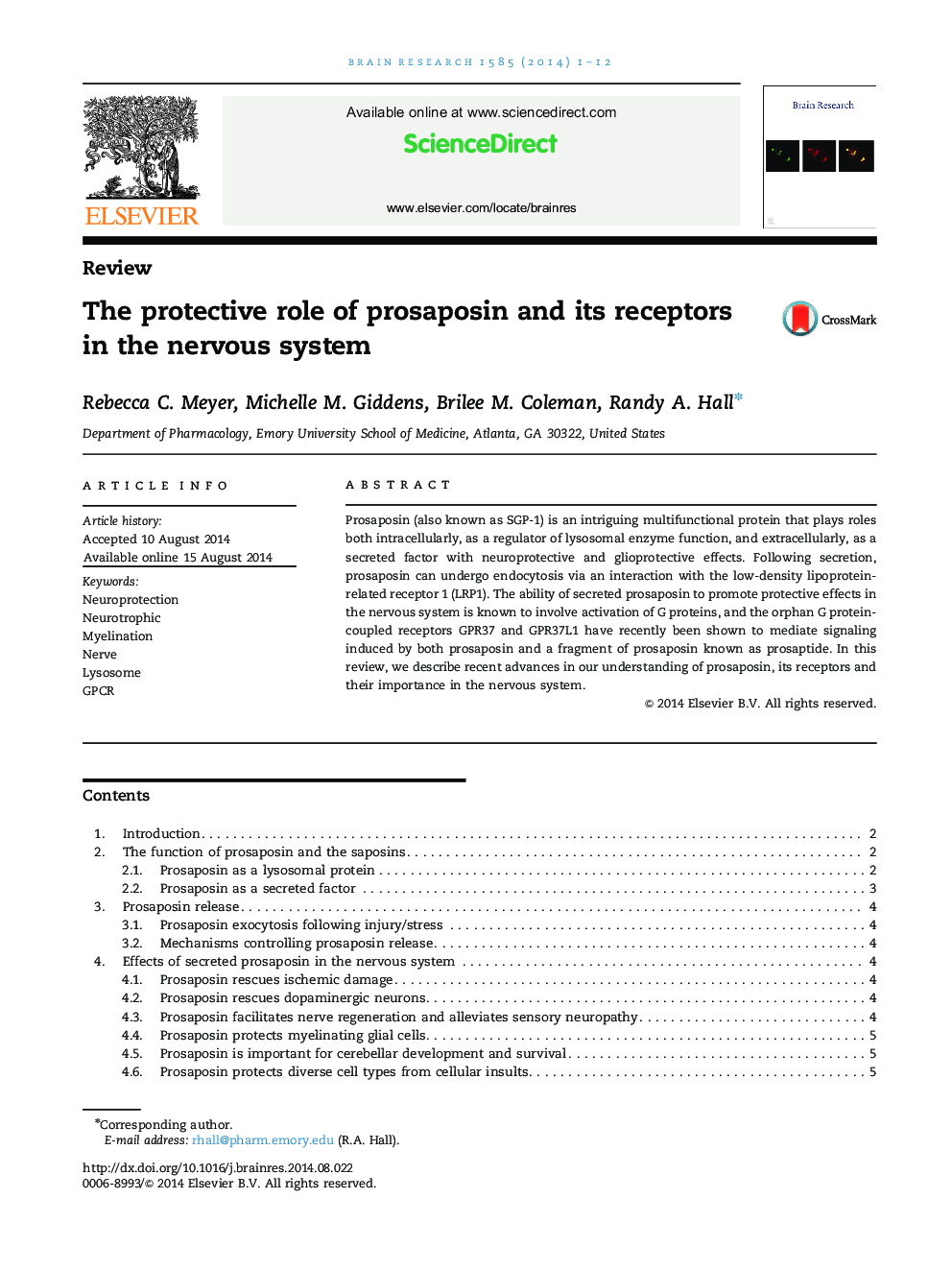| Article ID | Journal | Published Year | Pages | File Type |
|---|---|---|---|---|
| 6263277 | Brain Research | 2014 | 12 Pages |
â¢Prosaposin is a protein with key roles in the lysosome and extracellular space.â¢Prosaposin secretion is enhanced under conditions of injury and stress.â¢Secreted prosaposin can be re-uptaken into cells by the endocytic receptor LRP-1.â¢Secreted prosaposin activates G protein pathways to protect neurons and glia.â¢Prosaposin stimulates the G protein-coupled receptors GPR37 and GPR37L1.
Prosaposin (also known as SGP-1) is an intriguing multifunctional protein that plays roles both intracellularly, as a regulator of lysosomal enzyme function, and extracellularly, as a secreted factor with neuroprotective and glioprotective effects. Following secretion, prosaposin can undergo endocytosis via an interaction with the low-density lipoprotein-related receptor 1 (LRP1). The ability of secreted prosaposin to promote protective effects in the nervous system is known to involve activation of G proteins, and the orphan G protein-coupled receptors GPR37 and GPR37L1 have recently been shown to mediate signaling induced by both prosaposin and a fragment of prosaposin known as prosaptide. In this review, we describe recent advances in our understanding of prosaposin, its receptors and their importance in the nervous system.
